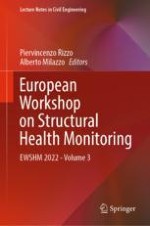2023 | OriginalPaper | Chapter
A Review on Technological Advancements in the Field of Data Driven Structural Health Monitoring
Authors : Rakesh Katam, Prafulla Kalapatapu, Venkata Dilip Kumar Pasupuleti
Published in: European Workshop on Structural Health Monitoring
Publisher: Springer International Publishing
Activate our intelligent search to find suitable subject content or patents.
Select sections of text to find matching patents with Artificial Intelligence. powered by
Select sections of text to find additional relevant content using AI-assisted search. powered by
